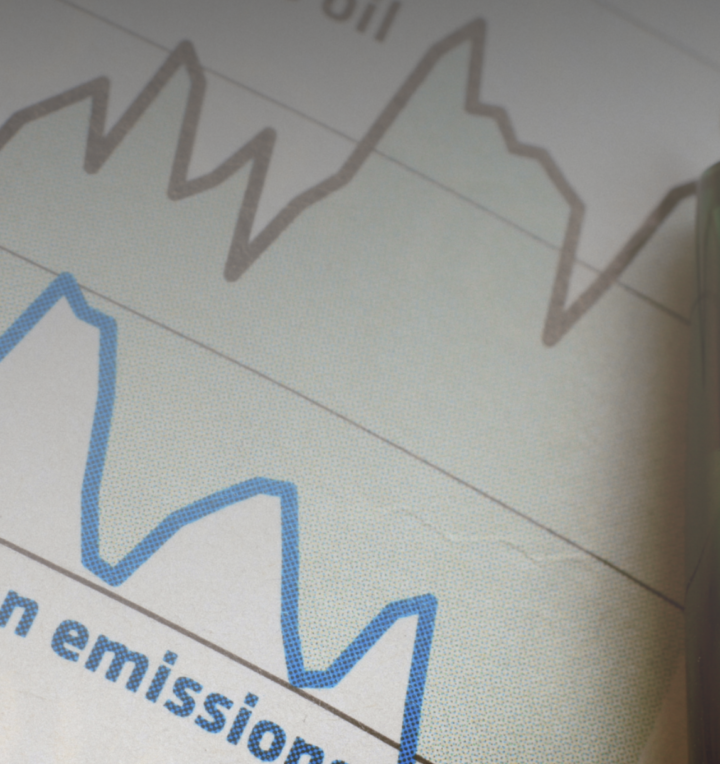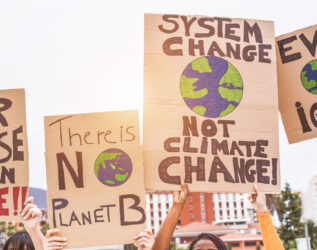A beginners guide to carbon markets

Last year, the global value of traded markets for carbon dioxide permits broke records, growing by 164% to €760B ($851B). As more and more organizations turn to carbon projects to lower their carbon footprint, carbon markets are being widely discussed. But it can be a challenging world to navigate. If you are just beginning to learn about carbon markets, we hope this article will serve as a good foundation.
Intro to carbon markets
In accordance with the Paris Agreement, we need to limit global warming to 1.5°C. This involves halving current greenhouse gas emissions by 2030 and reducing them to net zero by 2050. Although carbon markets emerged in the 90s, they took off in the late 2000s, and accelerated post-Paris Agreement as a robust attempt at decarbonization.
A carbon market puts a price on releasing carbon with the aim of reducing carbon emissions. As industries evolve to deliver their goods and services with carbon-free and eco-friendly alternatives, some industries face a more complicated journey. For instance, immediate reductions of emissions such as switching to clean energy, may not be economically viable for some companies. For example container shipping or chemicals. In cases like this, many companies turn to carbon credits.
What are carbon credits?
Carbon credits are measurable, verified emission reductions. Companies buy carbon credits from governmental regulators, in order to gain permission to generate a certain amount of CO₂ emissions. One carbon credit is equivalent to one ton of CO₂. However companies can sell their excess credit to other companies. Companies are thus able to compensate for their carbon footprint, even using carbon credits to go carbon neutral. Industries that are subject to carbon credits in Europe include energy-intensive industry sectors such as oil refineries, steel works, and the production of iron, aluminium, metals, cement, lime, glass, ceramics, pulp, paper, cardboard, acids and bulk organic chemicals.
Carbon credits can be issued at a national or international level. The Kyoto Protocal (1997) and the Paris Agreement (2005) created the first international carbon markets. Emission targets determine the number of carbon credits issued each year and usually operate under “cap-and-trade” programs. The cap is the limit on emissions set by the regulators. This cap gradually lessens over time making it more challenging for businesses to stay within the cap. This acts as an incentive to reduce the emissions of their business and stay within their caps. The companies that create more emissions beyond their targets, then need to buy extra credits from other companies or they face a fine. This is the trade.
What are carbon offsets?
Although the two terms are often used interchangeably, carbon credits and carbon offsets aren’t exactly the same. Whilst one unit of both equates to one ton of CO₂, they operate slightly differently. Carbon credits flow vertically between regulators and companies, whereas carbon offsets flow horizontally, whereby companies trade carbon revenue between companies. Companies generate a carbon offset when they extract a unit of CO₂ as part of their normal business activity. There are two types of carbon offsets: emission reductions and carbon removals.
i) Traditional offsets focus on reduction and result in carbon staying in the system, for example investing in renewable energy by funding hydro or solar power generation projects.
ii) Carbon removals, on the other hand, remove carbon completely from the system. For example, companies like Charm Industrial, that removes CO₂ through biomass, and Running Tide that removes CO₂ through kelpforests, can offer other companies to purchase offsets, in order to go that one step further.
Carbon offsetting essentially helps such environmental projects that can’t secure funding on their own.
Voluntary vs compulsory carbon markets
There are two different types of carbon markets. One is compulsory and operates with regulatory compliance carbon credits which are set by national or international regulators. The other is a voluntary market where credits can be bought proactively to offset emissions (carbon offsets). The voluntary market allows climate-conscious consumers and companies to offset their carbon footprint simply because they want to. For example, Alphabet (Google’s parent company), has been buying carbon offsets since the mid 2000s. And earlier this year, Alphabet, along with companies such as McKinsey and Shopify, announced that they will spend $925M buying offsets from carbon removal startups in 2022.
Carbon markets controversy
Some argue that carbon credits cap-and-trade programs aren’t sufficiently regulated. Critics challenge the accuracy of carbon measurements and if monitoring is properly accounted for. Furthermore, for real impact on a global scale, carbon credits cap-and-trade systems can only work if they are followed by the same framework by every country. There are major inconsistencies, with different countries operating in different contexts. However there have been some successes. For example, since around the time the “EU Emission Trading” system was introduced, approximately 24% of emissions were reduced, while the economy grew by approximately 60% over the same period. But in the following years that reduction slowed at a speed of approximately 3.7%.
There are more who question carbon offsets and the longevity of such projects. Offsets are a good short-term solution for those companies who, for example, cannot abandon fossil fuels overnight. They can also serve as an accountability tool, allowing companies to take action while low carbon options develop. But how much is it substituting the much needed long term solutions? Are offsets serving as an excuse for their buyers to avoid direct responsibility and make the necessary changes? There are some promising projects that would suggest otherwise. For example airline giant British Airways has partnered with impact startup ZeroAvia, to explore how hydrogen-electric aircrafts can “fuel” (excuse the pun), sustainable flying. We hope this inspires other airlines who may be guilty of green gimmicks by relying too heavily on offsets and are continuing to operate under business as usual.
Our concluding thoughts? Carbon markets are insufficient as a long term single solution, but they serve as a good transitional step in the right direction. So long as offset providers avoid maladaptation (i.e. work with natural environments and consider the limited resources that we have such as land area), they can be an effective way of buying us time before it completely runs out. And it is running out.











